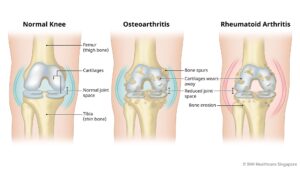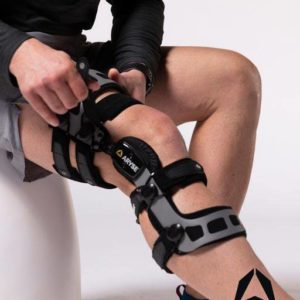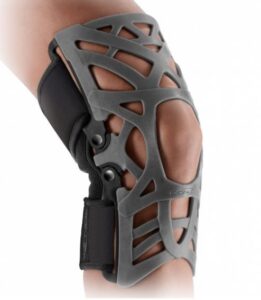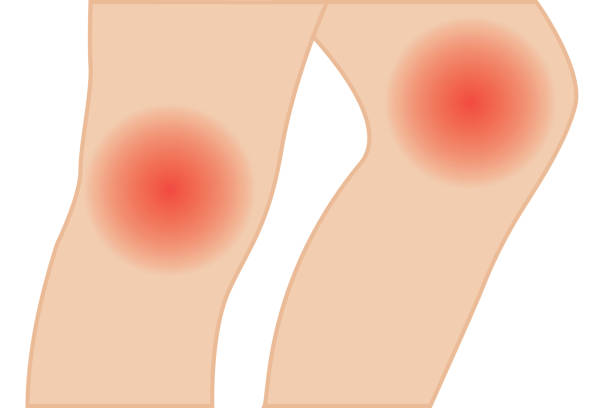



What is Knee Osteoarthritis?
Knee osteoarthritis (OA), also referred to as degenerative knee joint disease, typically develops due to the gradual wear and tear and the progressive loss of articular cartilage. The elderly population most commonly experiences this condition. Knee osteoarthritis has two types: primary and secondary. Primary osteoarthritis involves articular degeneration without any clear underlying cause. In contrast, secondary osteoarthritis is a result of factors such as an abnormal concentration of force on the joint (as seen in post-traumatic cases) or abnormal articular cartilage, often associated with conditions like rheumatoid arthritis (RA). Osteoarthritis is generally a progressive condition that may eventually lead to disability.
If you have osteoarthritis, you’re likely acquainted with the discomfort, stiffness, and restricted mobility caused by the friction of bone-on-bone contact. Among the areas most frequently affected by these symptoms are the knees. Various treatments, including medications, exercise, and other therapies, can provide relief. Another potential solution to alleviate joint pressure could be the use of a knee brace.
Benefits of Knee Braces
The effectiveness of knee braces for individuals with osteoarthritis remains somewhat unclear, as research yields mixed results. While some individuals experience improvements in pain relief and mobility, others report no significant changes. Osteoarthritis often impacts one side of the knee more than the other. Knee braces can potentially alleviate pressure on the area most affected by wear and tear, facilitating standing and movement. Additionally, they may offer the following benefits:
Alignment: A knee brace that maintains your knee in a straight position redistributes weight away from the inner side of the knee, providing support and alignment.
Pain Relief: For those with osteoarthritis beneath the kneecap, a brace featuring a cutout can help stabilize the bone and reduce pain. It may also enhance the feasibility of exercise, aiding in the strengthening of knee muscles.
Ligament Support: Certain braces immobilize the knee or allow controlled movement to aid in ligament healing after injury or surgery.
Types of Knee Braces
If your orthotist has a knee brace readily available in your size, you can acquire it immediately. However, if they don’t have one in your size, they will need to create a custom brace tailored specifically to your needs, and this process may require a few weeks.
Various types of knee braces are available, chosen based on the severity of your knee pain and the location of your arthritis, whether it’s under the kneecap or on the outside or inside of the leg.
Unloader brace: This brace incorporates metal bands that encircle your thigh and calf, linking to a hinged bar. It forms a customizable framework designed to enable the redistribution of pressure on your knee.
Web brace: In contrast to a sleeve brace that provides generalized support, a web brace utilizes silicone webbing that selectively tightens in specific areas as you flex and extend your knee.
Sleeve brace: This prevalent type of brace is typically used for mild knee pain or stiffness. It provides additional support and applies compression to the leg, which can help alleviate swelling and provide warmth to the knee joint.
We have a variety of different types of braces available, and we have them in stock. You can visit our product page to explore our selection or simply click on this link for more information.
How much do these Knee braces cost and are they covered by Medicare?
Knee braces come with a wide price range, spanning from $60 to $1,000. You can purchase a sleeve brace conveniently from a pharmacy, medical supply store, or online. Custom-made braces tend to be the most expensive option. If you have Medicare insurance, it’s advisable to review your policy to determine whether it includes coverage for knee braces or you can fill out this form by clicking here so that we can help you identify if your eligible for a knee brace.
Search Articles
Latest Articles
28th Feb, 24
23rd Feb, 24
20th Feb, 24
15th Feb, 24
13th Feb, 24



 888-616-4156
888-616-4156 







 28th Feb, 24
28th Feb, 24 


